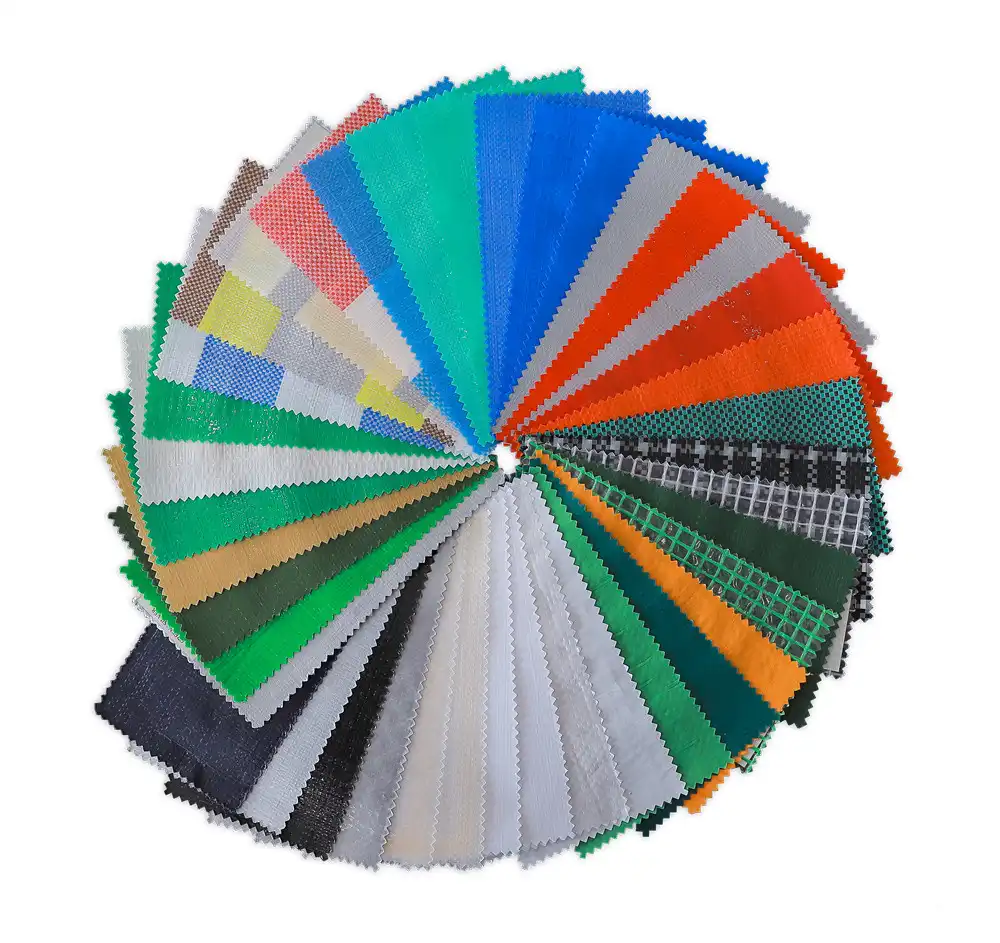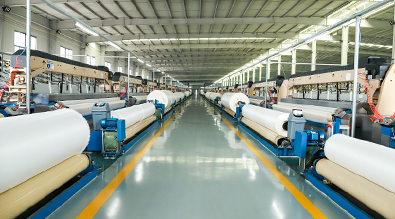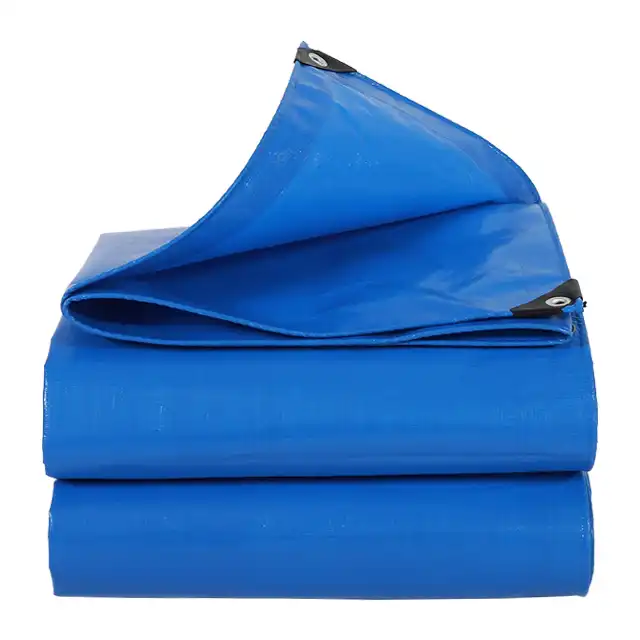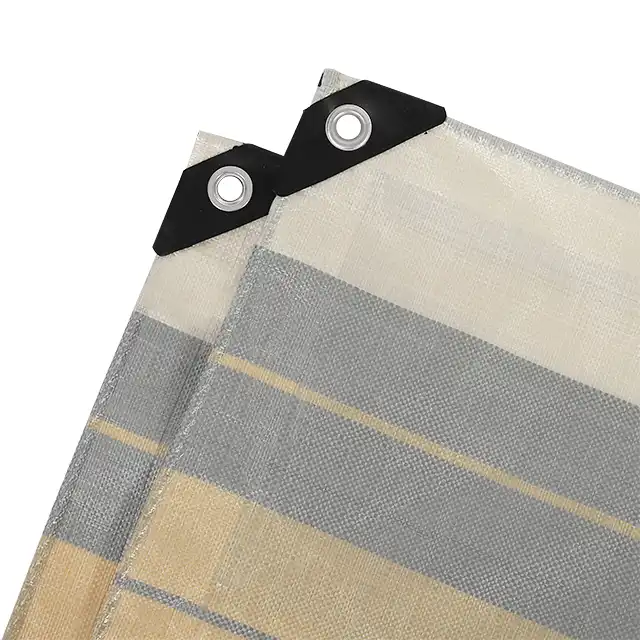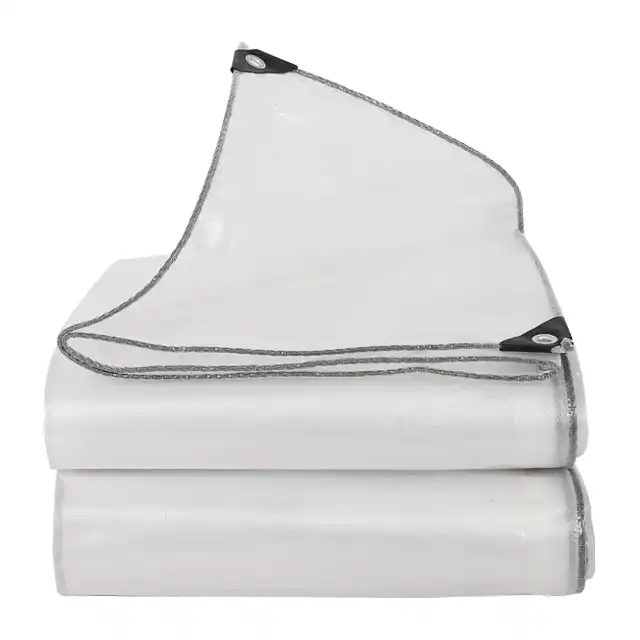Orange Tarpaulin vs Blue Tarpaulin: Which Works Best for Construction Sites
When project managers face the critical decision of selecting protective covering for their construction sites, the choice between orange and blue tarpaulins often creates uncertainty. Are you dealing with equipment damage from inadequate weather protection, struggling with visibility issues that compromise safety, or finding that your current tarpaulin solution fails to meet industry standards? Understanding the Blue vs Orange Tarpaulin comparison is essential for making informed decisions that protect your investment, ensure worker safety, and maintain project timelines. This comprehensive analysis examines the practical applications, performance characteristics, and cost-effectiveness of both options, providing construction professionals with the insights needed to optimize their site protection strategies while meeting regulatory requirements and operational demands.
Understanding Blue vs Orange Tarpaulin Specifications for Construction Applications
 The fundamental differences between blue and orange tarpaulins extend far beyond aesthetic preferences, encompassing critical performance factors that directly impact construction site operations. Blue indicates a lightweight tarp, and typically has a weave count of 8×8 and a thickness of 0.005–0.006 in (0.13–0.15 mm), making it suitable for general-purpose applications where moderate protection is required. Orange tarpaulins, conversely, are specifically engineered for enhanced visibility and safety applications, featuring robust construction that meets stringent industry standards for high-traffic and hazardous environments. Construction professionals must consider the material composition when evaluating Blue vs Orange Tarpaulin options. High-density polyethylene woven fabric with LDPE coating forms the foundation of both variants, but the manufacturing specifications differ significantly. Orange tarpaulins typically incorporate specialized UV treatment ranging from 1% to 7%, providing superior protection against harmful solar radiation that can degrade materials over time. The weave count varies from 10x10 to 14x14, with thickness measurements spanning 7 to 12 mil, ensuring adequate durability for demanding construction environments. Weight considerations play a crucial role in tarpaulin selection, with Blue vs Orange Tarpaulin variants available in weights ranging from 65gsm to 280gsm. Lighter variants between 100gsm and 180gsm prove ideal for temporary applications, while heavier specifications excel in long-term installations requiring maximum durability. The monthly production capacity of 4000MT demonstrates the manufacturing scalability necessary to meet large-scale construction project demands, ensuring consistent supply availability regardless of project size or timeline constraints.
The fundamental differences between blue and orange tarpaulins extend far beyond aesthetic preferences, encompassing critical performance factors that directly impact construction site operations. Blue indicates a lightweight tarp, and typically has a weave count of 8×8 and a thickness of 0.005–0.006 in (0.13–0.15 mm), making it suitable for general-purpose applications where moderate protection is required. Orange tarpaulins, conversely, are specifically engineered for enhanced visibility and safety applications, featuring robust construction that meets stringent industry standards for high-traffic and hazardous environments. Construction professionals must consider the material composition when evaluating Blue vs Orange Tarpaulin options. High-density polyethylene woven fabric with LDPE coating forms the foundation of both variants, but the manufacturing specifications differ significantly. Orange tarpaulins typically incorporate specialized UV treatment ranging from 1% to 7%, providing superior protection against harmful solar radiation that can degrade materials over time. The weave count varies from 10x10 to 14x14, with thickness measurements spanning 7 to 12 mil, ensuring adequate durability for demanding construction environments. Weight considerations play a crucial role in tarpaulin selection, with Blue vs Orange Tarpaulin variants available in weights ranging from 65gsm to 280gsm. Lighter variants between 100gsm and 180gsm prove ideal for temporary applications, while heavier specifications excel in long-term installations requiring maximum durability. The monthly production capacity of 4000MT demonstrates the manufacturing scalability necessary to meet large-scale construction project demands, ensuring consistent supply availability regardless of project size or timeline constraints.
Material Quality and Manufacturing Standards
The manufacturing process for both blue and orange tarpaulins involves sophisticated yarn extruding techniques utilizing over 30 high-technology machines capable of producing yarn thickness from 400D to 2500D. This range provides flexibility in selecting appropriate strength characteristics for specific construction applications. The fabric weaving process employs unique 5-meter and 4-meter width weaving machines, complemented by over 400 Korea-imported automatic water-jet looms that ensure consistent fabric quality without joints in widths ranging from 1.5 meters to 5 meters. Professional quality control measures throughout the coating process utilize four large fabric coating machines operated by experienced technicians who maintain strict quality standards. This meticulous approach ensures that Blue vs Orange Tarpaulin products meet ISO 9001:2015 certification requirements, providing construction professionals with confidence in product reliability and performance consistency. The finished product processing involves seven production lines and seven heat-sealing machines, supporting daily output exceeding 100 tons of tarpaulin sheets.
Safety and Visibility Considerations in Blue vs Orange Tarpaulin Selection
Construction site safety regulations frequently mandate high-visibility materials in areas where workers, equipment, and vehicles intersect. Brightly colored tarpaulins, like the orange or yellow ones, are used in high-traffic places to warn and ensure visibility, making orange tarpaulins the preferred choice for applications requiring enhanced safety compliance. The strategic use of orange tarpaulins creates visual barriers that alert personnel to potential hazards, equipment locations, and restricted areas, significantly reducing accident risks and improving overall site safety metrics. Blue tarpaulins, while offering excellent general protection capabilities, may not provide adequate visibility in certain construction environments. Bright colors like orange or blue ensure that the tarp is easily visible in remote locations, but the psychological impact and regulatory compliance advantages of orange coloring often outweigh the cost considerations. Construction managers implementing comprehensive safety programs recognize that the Blue vs Orange Tarpaulin decision directly influences worker awareness, equipment protection visibility, and emergency response efficiency. The OSHA compliance requirements for construction sites emphasize the importance of high-visibility materials in areas where heavy machinery operates. Orange tarpaulins meet these stringent requirements while providing the durability necessary for extended exposure to construction site conditions. The enhanced visibility characteristics reduce liability concerns and demonstrate proactive safety management, factors that increasingly influence project insurance rates and regulatory approval processes.
Regulatory Compliance and Industry Standards
Construction industry standards increasingly favor orange tarpaulins for applications involving public safety, equipment marking, and hazard identification. The Blue vs Orange Tarpaulin comparison must consider these evolving regulatory requirements that impact project approval timelines and compliance costs. Orange tarpaulins facilitate compliance with municipal construction codes, federal safety regulations, and insurance requirements that mandate high-visibility protective materials in specific applications. Professional construction managers recognize that the initial cost difference between blue and orange tarpaulins becomes negligible when considering the potential costs of regulatory non-compliance, accident claims, and project delays. The investment in orange tarpaulins often yields measurable returns through reduced insurance premiums, expedited permit approvals, and enhanced safety performance metrics that contribute to improved project efficiency and profitability.
Performance Analysis: Blue vs Orange Tarpaulin in Construction Environments
Durability testing reveals that both blue and orange tarpaulins demonstrate exceptional resistance to environmental stresses common in construction applications. The tear resistance characteristics, combined with UV treatment protection, ensure extended service life even under demanding conditions involving temperature extremes, moisture exposure, and mechanical stress. Construction professionals evaluating Blue vs Orange Tarpaulin performance must consider the specific environmental challenges present at their project sites. Waterproof performance remains consistent across both color variants, with 100% waterproof ratings achieved through advanced manufacturing processes that eliminate moisture penetration. The anti-corrosion and shrink-proof characteristics ensure dimensional stability throughout seasonal temperature variations, maintaining effective coverage and protection integrity. Arctic flexibility features enable reliable performance in extreme cold conditions, expanding the geographical applicability of both tarpaulin variants. The easy handling characteristics incorporated into both blue and orange tarpaulins reduce labor costs associated with installation, repositioning, and removal operations. Construction crews appreciate the lightweight design that facilitates rapid deployment without compromising protective capabilities. The standardized grommet spacing of approximately 36 inches provides consistent anchoring points that simplify installation procedures and ensure secure attachment under varying wind conditions.
Long-term Cost Effectiveness
Economic analysis of Blue vs Orange Tarpaulin selection must encompass the total cost of ownership including initial purchase price, installation labor, maintenance requirements, and replacement frequency. Orange tarpaulins often justify their premium pricing through extended service life, reduced safety incidents, and improved regulatory compliance that minimizes project delays and associated costs. The manufacturing quality standards implemented in both variants ensure comparable longevity under normal construction site conditions. However, the enhanced UV protection typically incorporated in orange tarpaulins may extend service life in high-exposure applications, reducing the frequency of replacement cycles and associated labor costs. Construction managers implementing life-cycle cost analysis often discover that orange tarpaulins provide superior value despite higher initial investment requirements.
Application-Specific Recommendations for Blue vs Orange Tarpaulin Usage
Equipment protection applications benefit from the enhanced visibility provided by orange tarpaulins, particularly in storage areas where machinery access requires clear visual identification. The Blue vs Orange Tarpaulin selection for equipment coverage should prioritize visibility factors that facilitate efficient operations while maintaining adequate weather protection. Orange tarpaulins excel in applications involving valuable equipment that requires conspicuous identification and protection from both environmental factors and unauthorized access. Material storage applications present different requirements where blue tarpaulins may provide adequate protection at reduced cost for non-critical materials stored in secure areas. However, orange tarpaulins prove superior for materials requiring enhanced visibility for inventory management, safety compliance, or theft deterrence. The decision matrix should evaluate the strategic importance of covered materials, security requirements, and operational efficiency factors. Temporary structure applications, including scaffold protection, work area enclosures, and weather barriers, benefit from the safety advantages provided by orange tarpaulins. The enhanced visibility characteristics improve worker awareness and safety compliance while maintaining the protective functions essential for construction operations. Construction managers responsible for comprehensive safety programs increasingly specify orange tarpaulins for all temporary structure applications regardless of incremental cost considerations.
Specialized Construction Applications
Roofing and facade protection applications require careful consideration of Blue vs Orange Tarpaulin characteristics relative to building aesthetics, neighborhood regulations, and property owner preferences. While orange tarpaulins provide superior safety benefits, some residential projects may require blue alternatives to minimize visual impact on surrounding properties. Professional contractors must balance safety requirements with client preferences and community standards when making these critical decisions. Underground and confined space applications present unique challenges where enhanced visibility becomes critically important for emergency response and safety procedures. Orange tarpaulins facilitate rapid identification of covered areas, equipment locations, and emergency access points that could prove vital during incident response operations. The Blue vs Orange Tarpaulin decision in these applications should prioritize safety factors over cost considerations given the potential consequences of visibility-related incidents.
Advanced Manufacturing Technologies and Quality Assurance
The production capabilities supporting both blue and orange tarpaulin manufacturing incorporate sophisticated technologies that ensure consistent quality and performance characteristics. Wire drawing operations utilize 15 specialized units that process raw materials into high-strength fibers suitable for demanding construction applications. The integration of over 200 water-jet looms, including advanced 4.25-meter width units, enables production of seamless tarpaulins that eliminate potential failure points associated with joined materials. Coating operations employ five specialized machines, including a 4.4-meter coating unit that ensures uniform application of protective materials across the entire tarpaulin surface. Professional technicians monitor these operations continuously, maintaining quality standards that support reliable performance under construction site conditions. The Blue vs Orange Tarpaulin manufacturing processes utilize identical quality control procedures, ensuring consistent performance characteristics regardless of color selection. Quality assurance testing protocols verify tear resistance, UV protection, waterproof performance, and dimensional stability through comprehensive evaluation procedures that simulate extended construction site exposure. These testing protocols ensure that both blue and orange variants meet stringent performance requirements essential for construction applications. The ISO 9001:2015 certification demonstrates commitment to quality management systems that support consistent product performance and customer satisfaction.
Innovation and Customization Capabilities
Research and development initiatives continue advancing tarpaulin technology through innovations in fire prevention capabilities, enhanced waterproofing, and ultra-wide width production. The development of 4-meter wide tarpaulins eliminates seaming requirements for large coverage applications, reducing installation time and improving protective integrity. These technological advances benefit both Blue vs Orange Tarpaulin variants, ensuring that construction professionals have access to cutting-edge protective solutions regardless of color preferences. Customization capabilities enable production of tarpaulins tailored to specific construction requirements, including custom dimensions, specialized grommet patterns, and application-specific performance characteristics. The flexibility to accommodate custom specifications ensures that both blue and orange tarpaulins can meet unique project requirements while maintaining cost-effectiveness. Professional construction managers increasingly leverage these customization capabilities to optimize protective solutions for complex project requirements.
Conclusion
The Blue vs Orange Tarpaulin comparison reveals that both options provide excellent protection for construction applications, with the optimal choice depending on specific safety requirements, regulatory compliance needs, and operational priorities. Orange tarpaulins excel in high-visibility applications where safety compliance and worker protection take precedence, while blue variants offer cost-effective solutions for general protection needs. Construction professionals must evaluate their specific requirements, regulatory environment, and long-term cost considerations when making this critical decision.
Cooperate with Linyi Shengde Plastic Co., Ltd.
As a leading China Blue vs Orange Tarpaulin factory established in 2003, Linyi Shengde Plastic Co., Ltd. offers comprehensive tarpaulin solutions backed by over two decades of manufacturing excellence. Our partnerships with UNHCR, IOM, ICRC, and UNICEF demonstrate our commitment to quality and reliability. With 600+ skilled workers, advanced manufacturing equipment, and ISO 9001:2015 certification, we deliver High Quality Blue vs Orange Tarpaulin products to over 30 countries worldwide. Contact our China Blue vs Orange Tarpaulin supplier team at info@shengdetarp.com for competitive Blue vs Orange Tarpaulin price quotes. Our China Blue vs Orange Tarpaulin manufacturer capabilities include custom specifications and Blue vs Orange Tarpaulin wholesale options. Experience reliable China Blue vs Orange Tarpaulin products with Blue vs Orange Tarpaulin for sale worldwide. Bookmark this guide for future reference when evaluating your construction site protection needs.
FAQ
What is the main difference between orange and blue tarpaulins for construction sites?
Orange tarpaulins provide enhanced visibility and safety compliance, while blue tarpaulins offer cost-effective general protection with slightly lighter weight specifications.
Which tarpaulin color is better for equipment protection on construction sites?
AOrange tarpaulins are preferred for valuable equipment protection due to their high visibility characteristics that improve security and operational efficiency.
Do orange and blue tarpaulins have the same waterproof capabilities?
Yes, both colors maintain identical 100% waterproof performance with equivalent tear resistance and UV protection when manufactured to the same specifications.
Are there regulatory requirements favoring specific tarpaulin colors in construction?
OSHA and many local regulations favor high-visibility colors like orange for construction applications involving public safety and heavy machinery operations.
References
1. Construction Safety Standards for Protective Equipment - Occupational Safety and Health Administration, U.S. Department of Labor
2. Polyethylene Tarpaulin Performance Standards - American Society for Testing and Materials, Committee D20 on Plastics
3. High-Visibility Safety Requirements in Construction - National Institute for Occupational Safety and Health, Centers for Disease Control
4. Industrial Textile Applications in Construction - Textile Research Institute, Manufacturing Technology Division
